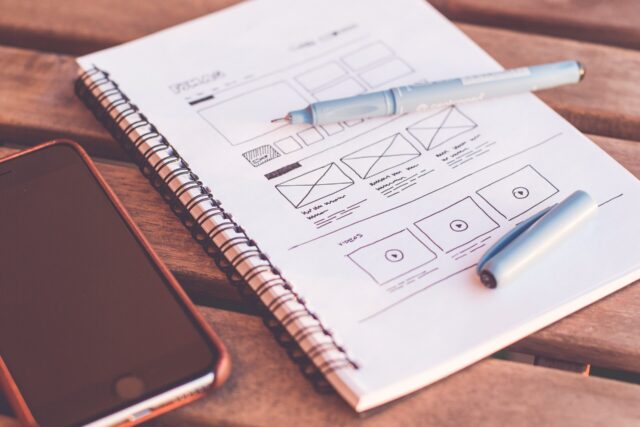Whether you’re just starting out or looking to do a revamp of your existing site, website design choices can be overwhelming. There can be hundreds or even thousands of website themes to choose from to guide the design—and choosing a theme is just the first step.
Your website provides a vital piece of your business, attracting interested families and campers, answering questions, and converting website visitors to customers for your business. We’ll break down the 3 most important design principles for your camp website to help you reach people sooner.
Embrace Mobile First
In web design, we used to design a website at desktop size and then rearrange elements to make it work on mobile. The “mobile first” concept means the opposite – that mobile is the most important design of your website.
Mobile search is often the first way people start researching a large investment, and websites are often shared between people over text, Facebook messages, and other mobile formats. If visitors can’t find what they want on mobile, they may move on to the next website.
So what does mobile first mean in practice? You should be using a responsive website builder that takes all screen sizes into account when you create your site. This means that fonts will resize to be big enough to be readable and that spacing between elements looks great.
Then, check every page of your website on multiple phones and tablets to make sure that you can open menus, click links, tap buttons, and easily interact with all website elements. And finally, consider disabling pop-ups that can be difficult to close out of on a small screen.
Show and Tell
Modern websites are more image-driven than ever before. While writing descriptions of important information is crucial to your website’s success (both in providing information people want and in helping your SEO), it’s best to be able to also provide dynamic photos on every website page.
Consider what you would show someone on a tour of your facility who has never seen it before. You’ll probably want to show off the grounds, some activities, the cafeteria, and what the inside of the cabins look like. And if there happen to be people around enjoying the camp while you’re showing it off? Even better.
A number of tests have shown that including images with people helps websites convert better. Seeing faces helps people imagine themselves in that space. For the best website experience, hire a photographer to come out for a day to capture your camp. You’ll have photos for your website and a high-quality repository of images to use in other materials.
Prioritize Accessibility
Web accessibility means that all website users will be able to understand, navigate, and interact with your website. Accessibility is beneficial not just for those who may have vision or hearing impairments, but also for all website users. The Web Accessibility Initiative is the best resource for checking if your website is compliant.
Here are a few places you can start with to make sure your website is accessible to all users:
- Alt text: Adding alt text to images helps screen readers to tell people what’s on a page. Your alt text should always be as descriptive as possible, and should never be a place that you try stuffing keywords into.
- Colors: When placing text over a background color, check that there is enough contrast between colors so that people with visual disabilities such as color blindness will be able to read the text.
- Hierarchies: Use heading and subheading styling to indicate the flow of information. Do not use heading styling simply to provide a certain font size or color to a piece of information.
- Content: Avoid jargon or industry abbreviations and instead opt for the most simplified language possible. This will be easier to understand for all website users, but especially benefits those who may have cognitive disabilities, use a screen reader, or be a non-native English speaker.
Some people may see the above tasks as an added layer of difficulty, but there are a couple reasons why they’re actually non-negotiable. First, these items are actually also extremely important factors for your website’s SEO. Search engines like Google prioritize websites that are easy to digest and navigate. So, this helps your website rank higher and helps your website visitors navigate your website. That’s a win-win.
And more importantly, it’s the law. The Americans with Disabilities Act (ADA) covers websites under the same standards that a brick and mortar business would be subject to. In other words, your website must be accessible to all visitors, regardless of ability. Unfortunately, the Department of Justice still hasn’t formalized what the standards are for website accessibility, but the gold standard is the Web Content Accessibility Guidelines (WCAG) and it’s the best place to start.
Key Takeaway: Keep it Simple
While this may seem to be a lot of information to digest, at its core good web design is all about making it easy for people to find what they need on your site. The first steps to building your lead converting website are:
- Checking that everything looks great and works well on mobile
- Using great photos that show off your camp and its facilities
- Making the site accessible to all users with clear copy and simple navigation
Once you get your campers in the door, the rest is easy with CampSite. We handle the online registration, billing, forms, and so much more. Request a free demo to see what we can do.
